Q. You are certainly correct about some of the persimmon fruit getting sunburned. I had to remove 15 persimmon fruit because of sun damage. One thing I have noticed is that some of the new growth from the main branches are aimed downward so I am hoping to eventually grow the tree closer to the ground so more fruit is in the shade. All the fruit is small. Hopefully, since this is the first crop, the situation will improve as the tree gets bigger.
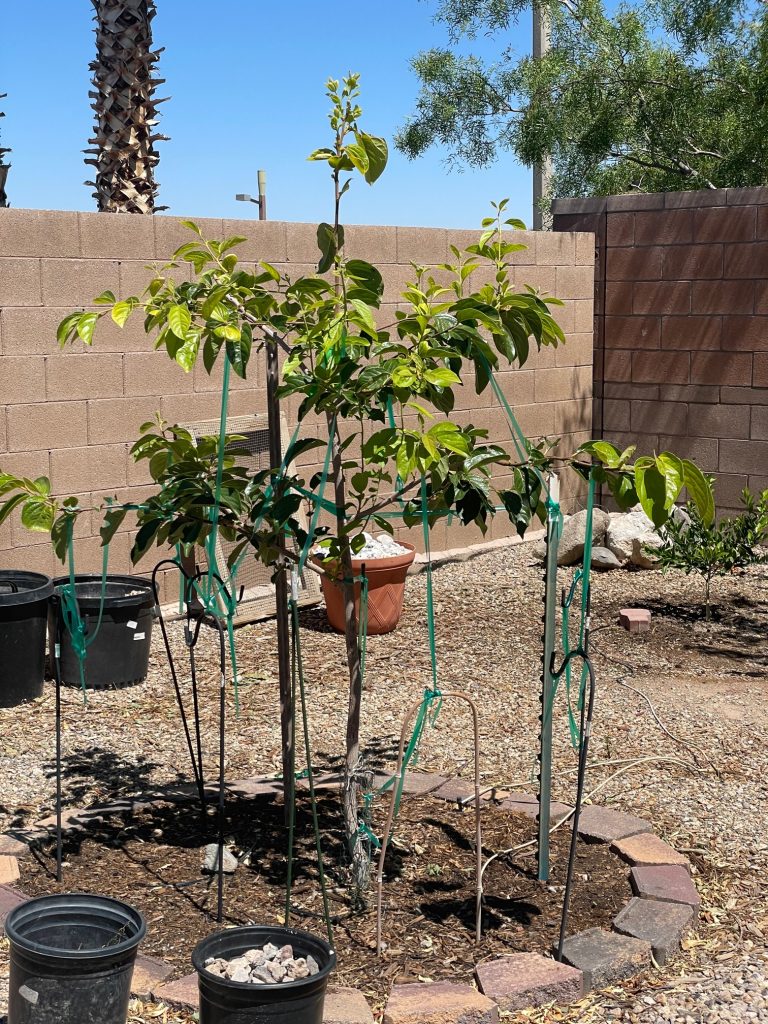
A. You’re right, persimmon fruit does get a bit larger as the tree gets bigger, if it is “thinned” appropriately, and fertilized in the spring. Play around with it. It may be a bit late for your trees, but try planting persimmon fruit trees on the east side of your home so it gets afternoon shade. Hopefully, it will reduce the number of fruit that have sun damage. Tree fruit needs only about 6 to 8 hours of full sunlight. Morning sun is best for persimmon trees of all kinds. If fruit trees are planted too close together, they may get too much shade.
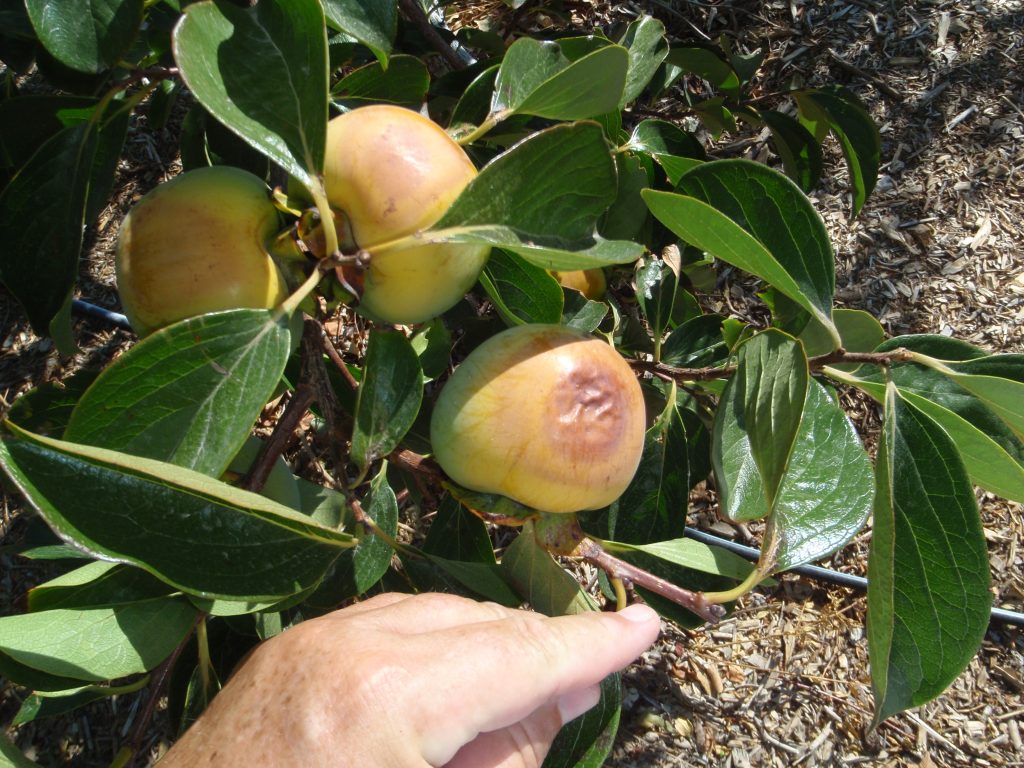
Try growing the variety ‘Giant Fuyu’ if you want larger fruit when the tree is three to five years old. Your persimmon varieties do not have lower limbs to provide some shade for themselves and they are planted very close together. I like semi-dwarf fruit trees planted 8 to ten feet apart and no more than ten feet tall from pruning.
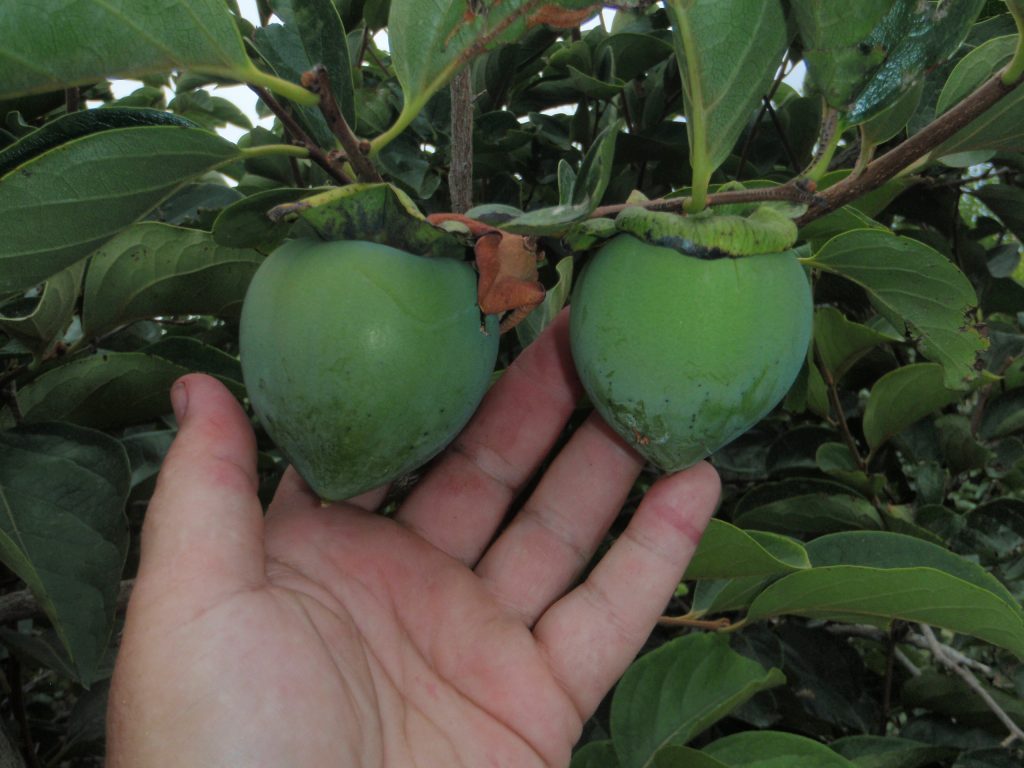
If the persimmon tree is already planted in full sun, I have had luck producing fruit without sunburn as the trees get bigger together with appropriate pruning. The pruning I give them produces the shade the fruit needs to produce undamaged fruit. Before it flowers, but after new growth has begun, I will “tip prune” them. This means I will prune the new growth by about half as it is developing.
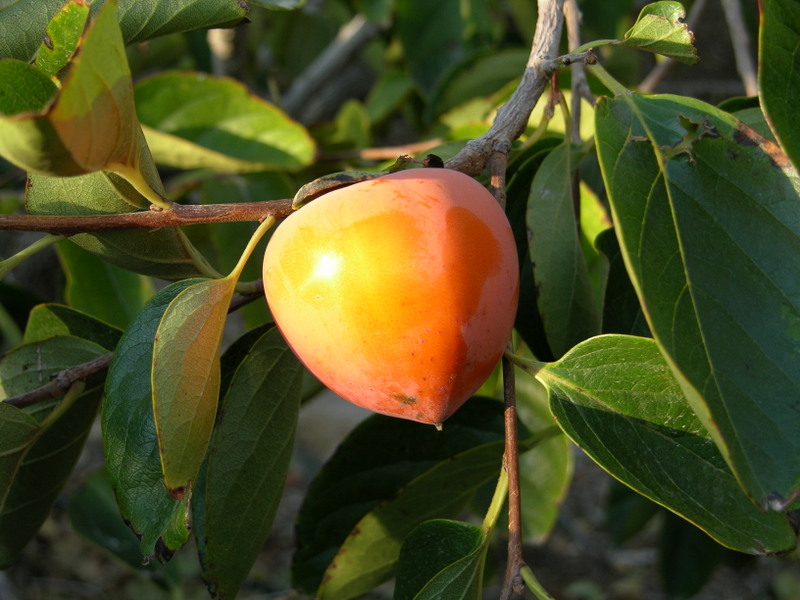
In about one month of new growth (after pruning), new stems produce fruit on the top and bottom of this new growth. When I am thinning the flowers, I remove the top flowers in the hot sun. This gives the remaining bottom fruit the shade they need.
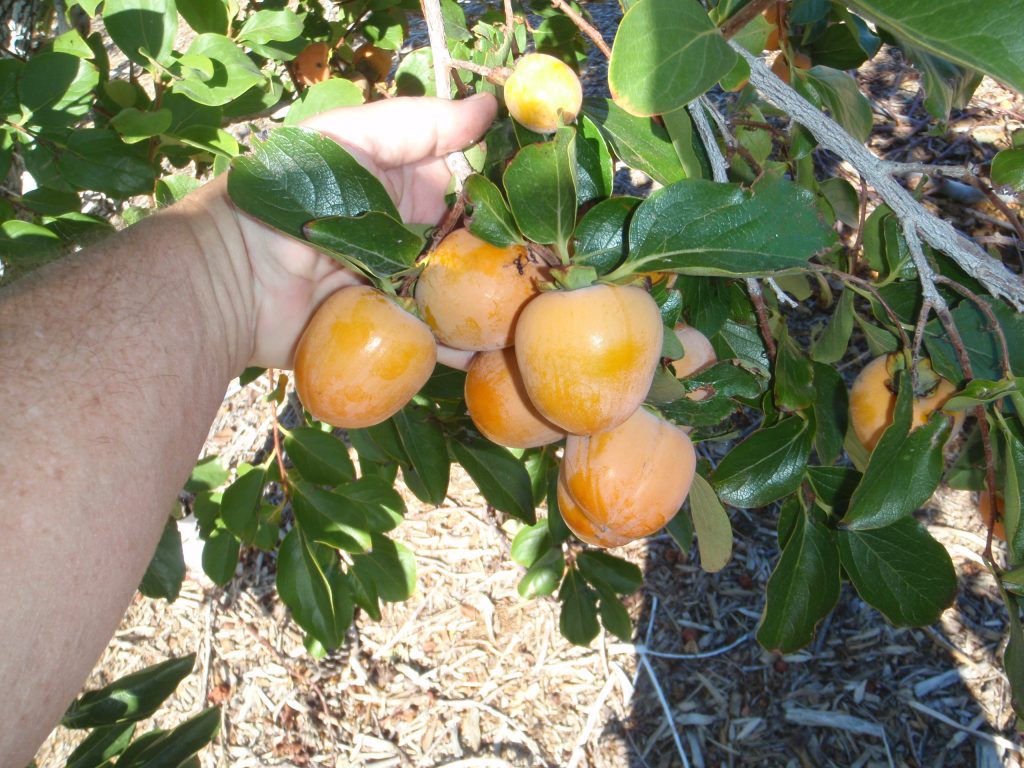
Persimmon fruit grows on “current season wood”. Unlike most temperate fruit trees, it produces wood in the spring, then it flowers on this wood, and finally fruit is produced from the flowers. Never thin the flowers as you don’t know if it turns to fruit or not. Some fruit is not pollinated. Wait until you see small fruit developing, about one-half inch in diameter. Then thin.
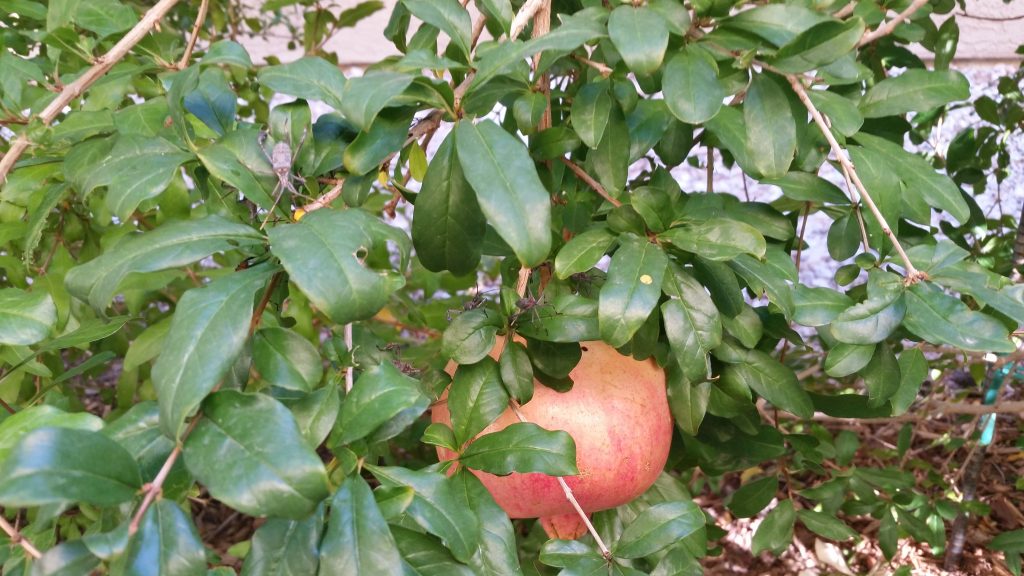
Another fruit tree that produces its fruit late (on current season wood) is pomegranate. The fruit gets damaged (discolored rind or worse) in full sun and both the tree and fruit benefit from afternoon shade when grown in the desert.